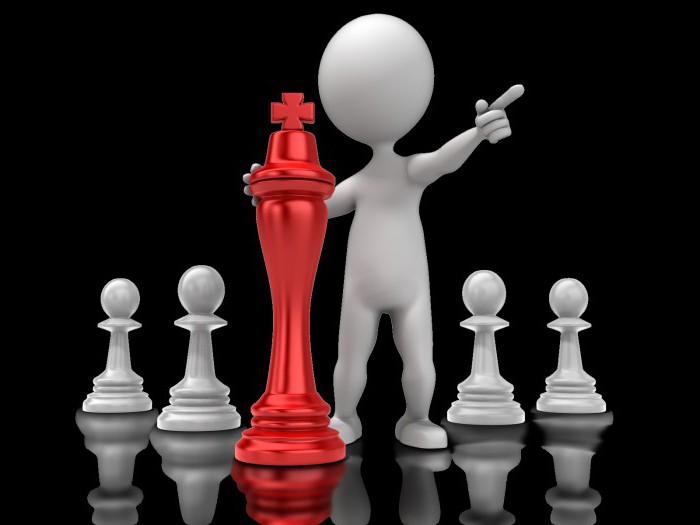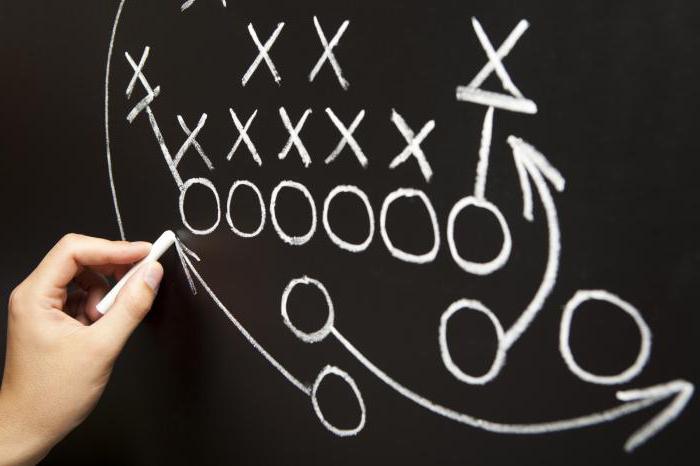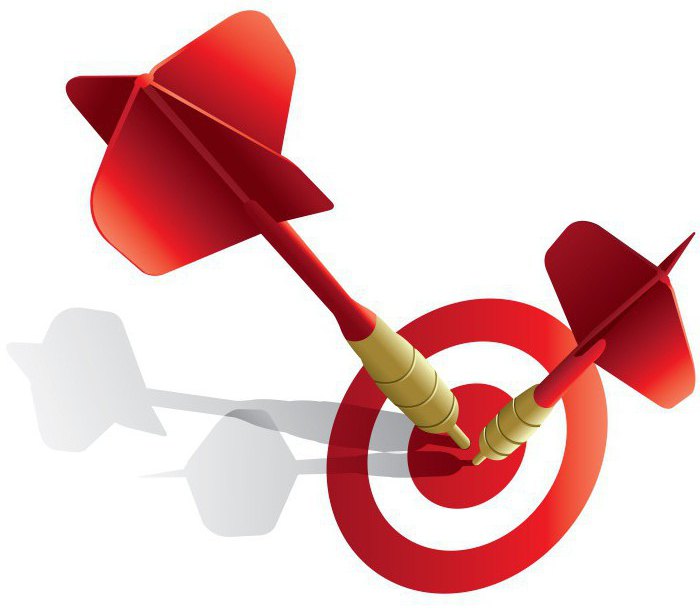Any company should be puzzled by the study of this issue. Marketing strategy is a component of the corporate strategy, which determines the direction of the company taking into account its current internal state and external conditions in which the company operates.
The need to develop a marketing strategy
Strategic management is more common among large enterprises that need a professional approach to determining the direction of activity, vision of the company in the future and have enough funds for this. The market position of small enterprises is often determined on an intuitive, reactionary level, since the distribution of a small amount of resources does not require significant labor and resources, and the future of such enterprises is more susceptible to outside influences. However, it is worth noting that strategic management to some extent is necessary at each enterprise, since competent management allows you to choose the right paths to achieve the ultimate goal.
Marketing strategy helps to choose a basic model of enterprise behavior in the market and ensure its further successful formation. It may not be able to protect against any market dangers, but it may well help to develop ways to respond to the most likely options and maximize the effective use of all available resources. The process of forming a marketing strategy, as well as other positions of this complex concept, ends with the choice of one of the alternatives, however, control passes to the next stage - the development of action programs, which determine how to achieve the goals set in the previous stage. Also, to develop a marketing strategy, it is important to establish an effective intra-organizational communication system.
Marketing Strategy in a Strategic Pyramid
Strategic management involves the formation of a “strategic pyramid” at the enterprise, which includes four levels of strategies:
- Corporate.
- Business.
- Functional.
- Operational.
At the stage of forming a business strategy, the following are determined: portfolio strategy, growth strategy, and directly marketing (competitive) strategy. We focus on how to ensure its formation. The marketing strategy determines the way out and consolidation in certain markets and market niches, evaluates the prospects for development in certain strategic areas of business, methods of competition, ensuring the competitiveness of products.
Types of Marketing Strategies
At the stage of choosing a competitive strategy, the enterprise determines the general model of market behavior, by what methods the target demand will be won and maintained. The alternatives that an enterprise can follow are divided into types.
Marketing strategy happens:
- Violent (power).
- Patient (niche).
- Commutative (adaptive).
- Experimental (pioneer).
Violent (power) strategy is used in the management of large firms specializing in mass, standardized production. In this case, competitiveness is ensured due to the “economies of scale”, which allows mass production of high-quality products and their sale at a relatively low price.
Patient (niche) strategy is typical for those companies that are focused on a niche business, that is, specialized products to meet demand in a narrow market segment.The strategy is applicable for those who produce specialized high-quality goods at a high price. Such a strategy is good in that it allows you to find that part of the market that will not be available to competitors, thereby making it possible to reduce the cost of competition and redirect resources to self-development.
A commutative (adaptive) strategy involves satisfying individual services, solving problems on a local scale, which is typical for small, private enterprises, often of short duration. Enterprises focused on a commutated strategy seek out any opportunities to satisfy the services of their customers, therefore such firms are usually very flexible in their activities.
An exploratory strategy (pioneering, innovative) is the most risky of strategies; it involves the creation of completely new products, revolutionary products. The main problem of such companies is that it is impossible to study the demand for their products, because there simply isn’t yet, the exporters form a need for their own product, and their success in business depends on how much it will turn out for them. The practice of exporting firms shows that only a small percentage of “pioneers” succeed, but this success is huge and often covers the costs of all failures. Such a business is called “scalable” in the literature.
Functional Marketing Strategies
The following is the functional level, which involves the development of tactical measures for different departments of the company to achieve the strategies that were laid down at the previous stage. At this stage, existing product marketing is developed or improved, which is divided into the following types.
Marketing strategy at the functional level is divided into the following types:
- Assortment.
- Promotion
- Distribution
- Pricing.
- Target market selection.
Assortment marketing strategy involves determining the product groups that will be in the company's portfolio, the breadth and depth of the assortment, describe the differentiation of goods or the development of new products.
Determining the target audience for which the enterprise will focus, developing communication plans and conducting an information campaign that will familiarize the potential consumer with the product - all this is part of building a promotion strategy. A marketing promotion strategy may also indicate a firm’s advertising budget.
The distribution strategy determines the distribution channels of products and relationships with resellers, with whom the company will further cooperate.
The marketing pricing strategy defines the basic principles by which wholesale and retail prices, margins, discounts, promotions, and price increases are set. The pricing strategy also involves calculating return on sales In the organisation.
The marketing strategy for choosing the target market denotes those niches that the company will work for, denotes the principles of consumer segmentation according to various criteria (gender and age, property, etc.).
Stages of forming a marketing strategy
The process of developing a marketing strategy consists of the following steps:
- Definition of the mission and goals of the enterprise.
- Diagnosis of the external environment of direct influence.
- Diagnosis of the external environment of indirect influence.
- Demand segmentation and target audience selection.
- Diagnostics of the internal environment.
- Development of strategic alternatives.
- The choice of strategy.
- The forecast of economic efficiency of the application of the strategy.
- Definition of tools for monitoring results.

Product Life Cycle and Marketing Strategy
In strategic management, it is extremely important to consider the life cycle of the product and the product itself.A marketing strategy is developed taking into account the stage that the product is experiencing in a given period of time and. Let us dwell in more detail on familiarization with the concept of the product life cycle.
Under the life cycle of a product is understood that period of time that a product experiences from the moment of its appearance on the market to the moment of disappearance.
Scientists differently determine the stages that a product goes through its entire life cycle, but most converge on four main ones:
- Origin (occurrence).
- Growth (development).
- Maturity (saturation).
- Aging (decline).
Next, it is worth considering the characteristics that are inherent in the product at different stages of the life cycle and the features of strategic management that are used at each of them.
Stage of Origin
The product only enters the market and does not have clear characteristics, the market is not saturated, so competition is either at a low level or not. The price of goods at the stage of origin is set at a high level, since the manufacturer is interested in a quick return on investment. Almost inevitable high costs of sales promotion, the costs of finalizing the product itself. Activities are often unprofitable, a slight increase in sales due to insufficient market development.
Initial marketing actions:
- The study of existing demand.
- Adaptation of goods to demand.
- Introducing consumers to the benefits of the product.
- Organization of a sales and promotion system.
The marketing strategy at this stage pursues the main goal - the conquest of the market.
At the inception stage, the leader decides on strategic behavior. It has two main patterns of behavior: skimming and penetration. These strategic actions depend on the level of the price of the goods and on the level of costs of sales promotion.
Growth stage
At the growth stage, usually there is an increase in sales volumes, the presence of formed demand for the goods, increased competition, the product itself has already been improved and adapted to the characteristics of demand. The highest profit rates are observed at the end of the growth stage.
Marketing actions at the growth stage:
- Brand development.
- Product differentiation to conquer different segments.
- Search for more efficient distribution channels.
- Reorientation of advertising from the informational direction to stimulating.
- Price reduction, the introduction of post-warranty service and other additional services.
The main goal is to strengthen the competitive position.
Maturity stage
At the stage of saturation, the product is in stable demand, has an established quality, distribution channels. Sales volumes are undergoing recession (growth retardation). In proportion to the growth of producers of such products, competition intensifies, forcing the manufacturer to gradually lower the selling price, which ultimately reduces the level of profitability and transfers the product to the aging stage. The attention of manufacturers is shifting to a greater extent to the conduct of competition and upholding of their positions, rather than to customer satisfaction.
Marketing alternatives at maturity:
- All kinds of promotions, discounts, bonuses.
- Advertising, aimed at upholding a competitive position.
- Market change.
- Product Modification.
- Improving the marketing mix.
The main goal is to maintain a competitive position and maintain effectiveness.
Stage of aging
The last, final stage is characterized by a stable sales volume or its decline. The severity of competition is also declining as many manufacturers exit the market. Advertising costs are reduced. A fundamentally new product may appear that will better satisfy consumer demand and a new company that carries out more efficient activities.
Marketing strategy and actions at the recession stage consist of the following stages:
- Using merchandising tools.
- Stimulating sales staff for effective implementation.
- Sales promotion service.
- Elimination of unprofitable strategic business units.
The main goal is to maintain the profitability of production, return the product to the previous stage or exit the market.
The article gives a classic version of the life cycle, but it is not a regularity, but only a general concept, which is most often observed on the market. Depending on the characteristics of the product itself, the selected market and a combination of many other factors, it may have a completely different model, a different sequence and duration of the stages of the product life cycle. A marketing strategy should be developed taking into account all these features in order to timely respond to market challenges and determine the most rational strategic actions.
Background information for developing a marketing strategy
The effectiveness of a marketing strategy directly depends on the quality of the information on the basis of which it is developed. Not every company its financial capabilities allow you to conduct your own marketing research. A marketing strategy developed on the basis of those market analyzes that can be ordered or obtained in the public domain (and often very far from the real situation) will not bring the enterprise the expected benefits. Also, marketing and other types of strategies will be erroneous due to the inaccuracy of the initial data and may leave a negative imprint on entrepreneurial activity.
Based on the foregoing, it is clear how enormous the process of formation is. A marketing strategy can be competently developed based on the following sources of information. The list may be adjusted and supplemented depending on the features of the product.
- Analysis of production efficiency (cost, return on investment, the effectiveness of the selected production technology, etc.).
- Analysis of sales efficiency (suppliers, distribution channels, promotion, etc.).
- Performance analysis financial activities enterprises.
- Assessment of investment attractiveness of the enterprise and competitors.
- Comprehensive analysis of competition.
- Segment analysis of demand.
- Assessment of the level of government intervention in the industry (at the enterprise).
- Analysis of the industry (development prospects).
The development of a marketing strategy is a painstaking and responsible process, and the effectiveness of its construction has been proven by hundreds of successful cases from world business practice.








